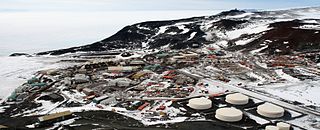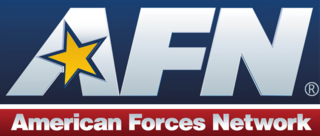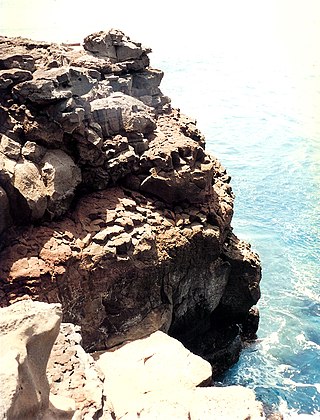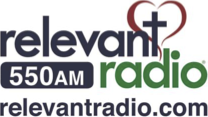
The Global Positioning System (GPS), originally Navstar GPS, is a satellite-based radio navigation system owned by the United States government and operated by the United States Space Force. It is one of the global navigation satellite systems (GNSS) that provide geolocation and time information to a GPS receiver anywhere on or near the Earth where there is an unobstructed line of sight to four or more GPS satellites. It does not require the user to transmit any data, and operates independently of any telephone or Internet reception, though these technologies can enhance the usefulness of the GPS positioning information. It provides critical positioning capabilities to military, civil, and commercial users around the world. Although the United States government created, controls and maintains the GPS system, it is freely accessible to anyone with a GPS receiver.

McMurdo Station is an American Antarctic research station on the southern tip of Ross Island, which is in the New Zealand–claimed Ross Dependency on the shore of McMurdo Sound in Antarctica. It is operated by the United States through the United States Antarctic Program (USAP), a branch of the National Science Foundation. The station is the largest community in Antarctica, capable of supporting up to 1,500 residents, and serves as one of three year-round United States Antarctic science facilities. All personnel and cargo going to or coming from Amundsen–Scott South Pole Station first pass through McMurdo. McMurdo Station continues to operate as the hub for American activities on the Antarctic continent. By road, McMurdo is 3 kilometres (1.9 mi) from New Zealand's smaller Scott Base.

A non-directional beacon (NDB) or non-directional radio beacon is a radio beacon which does not include inherent directional information. Radio beacons are radio transmitters at a known location, used as an aviation or marine navigational aid. NDB are in contrast to directional radio beacons and other navigational aids, such as low-frequency radio range, VHF omnidirectional range (VOR) and tactical air navigation system (TACAN).
Call signs are frequently still used by North American broadcast stations, in addition to amateur radio and other international radio stations that continue to identify by call signs worldwide. Each country has a different set of patterns for its own call signs. Call signs are allocated to ham radio stations in Barbados, Canada, Mexico and the United States.

The American Forces Network (AFN) is a government television and radio broadcast service the U.S. military provides to those stationed or assigned overseas, and is headquartered at Fort George G. Meade, Maryland. AFN comprises two subordinate overseas commands and one directorate in the continental United States. Overseas, AFN Europe is headquartered at Sembach Kaserne, Germany and consists of 15 subordinate stations in the countries of Bahrain, Belgium, Cuba, Germany, Greece, Italy, Spain, and Turkey. AFN Pacific is headquartered at Yokota Air Base, Japan and consists of nine stations in the countries of Diego Garcia, Japan, and South Korea. Stations under AFN Europe and AFN Pacific conduct live local radio shows 12 hours a day Monday through Friday, with the exception of U.S. federal holidays. Stateside, AFN's broadcast operations, which include global radio and television satellite feeds, emanate from the AFN Broadcast Center/Defense Media Center in Riverside, California.
Station identification is the practice of radio and television stations and networks identifying themselves on-air, typically by means of a call sign or brand name. This may be to satisfy requirements of licensing authorities, a form of branding, or a combination of both. As such, it is closely related to production logos, used in television and cinema alike.

Ka Lae, also known as South Point, is the southernmost point of the Big Island of Hawaii and of the 50 United States. The Ka Lae area is registered as a National Historic Landmark District under the name South Point Complex. The area is also known for its strong ocean currents and winds and is the home of a wind farm.

ABC Radio Brisbane is an ABC Local Radio station in Brisbane, Queensland. It is one of the largest stations in the network, serving as a base for Queensland programming – many programs are broadcast across the ABC Local Radio network in regional and rural areas of Queensland when those stations are not carrying local programming.

WLVM is an American radio station licensed to serve the community of Chickasaw, Alabama, and broadcasting to the Mobile metropolitan area. The station is owned by the Educational Media Foundation.
In broadcasting and radio communications, a call sign is a unique identifier for a transmitter station. A call sign can be formally assigned by a government agency, informally adopted by individuals or organizations, or even cryptographically encoded to disguise a station's identity.

WPRO is a commercial AM radio station in Providence, Rhode Island. It is owned by Cumulus Media, broadcasting a news/talk radio format, simulcast on co-owned 99.7 WEAN-FM. The studios for WPRO and other Cumulus Providence stations are on Wampanoag Road in East Providence, at the Salty Brine Broadcast Center, named after WPRO's longtime morning host.
KRNT is a radio station broadcasting a sports format. Serving the Des Moines, Iowa, United States, area, the station is owned by Saga Communications through licensee Saga Communications of Iowa, LLC; it operates as part of Saga's Des Moines Radio Group.

WSJW is a radio station licensed to Pawtucket, Rhode Island, serving the Providence area. Established in 1950 as WPAW, the station is owned by Relevant Radio, Inc. and airs Catholic talk radio programming.

Okinawa Television Broadcasting Co., Ltd., also known as OTV, is a Japanese broadcast network affiliated with the FNN/FNS. Their headquarters are located in Okinawa Prefecture.
Amateur radio call signs are allocated to amateur radio operators around the world. The call signs are used to legally identify the station or operator, with some countries requiring the station call sign to always be used and others allowing the operator call sign instead.
Call signs in Antarctica include a three letter region code and a series of numbers and letters.
Broadcast call signs are call signs assigned as unique identifiers to radio stations and television stations. While broadcast radio stations will often brand themselves with plain-text names, identities such as "cool FM", "rock 105" or "the ABC network" are not globally unique. Another station in another city or country may have a similar brand, and the name of a broadcast station for legal purposes is normally its internationally recognised ITU call sign. Some common conventions are followed around the world.
KSBK was a radio station in Naha, Okinawa, Ryukyu Islands, Japan, operated by the Ryukyu Broadcasting Corporation (RBC). At its closure, it was the only non-military English-language radio station in Japan; among the disc jockeys who worked at the station were Robert Colbert and Art Bell. KSBK, which became JORO when the Ryukyu Islands reverted to Japan in 1972, operated from September 1, 1955, to October 31, 1973, being closed as a result of government skepticism over the continued need for a commercial English-language station and the application of Japanese broadcasting regulation, which did not permit duopolies.
AFN Frankfurt was a radio station in Frankfurt, Germany, that was operational from 1945 to 2004. It was a part of the American Forces Network (AFN) broadcasting to US soldiers serving overseas, and long served as headquarters of AFN Europe. It was popular not just with soldiers, but also with a German "shadow audience", and was instrumental in introducing several American musical styles to German listeners.











